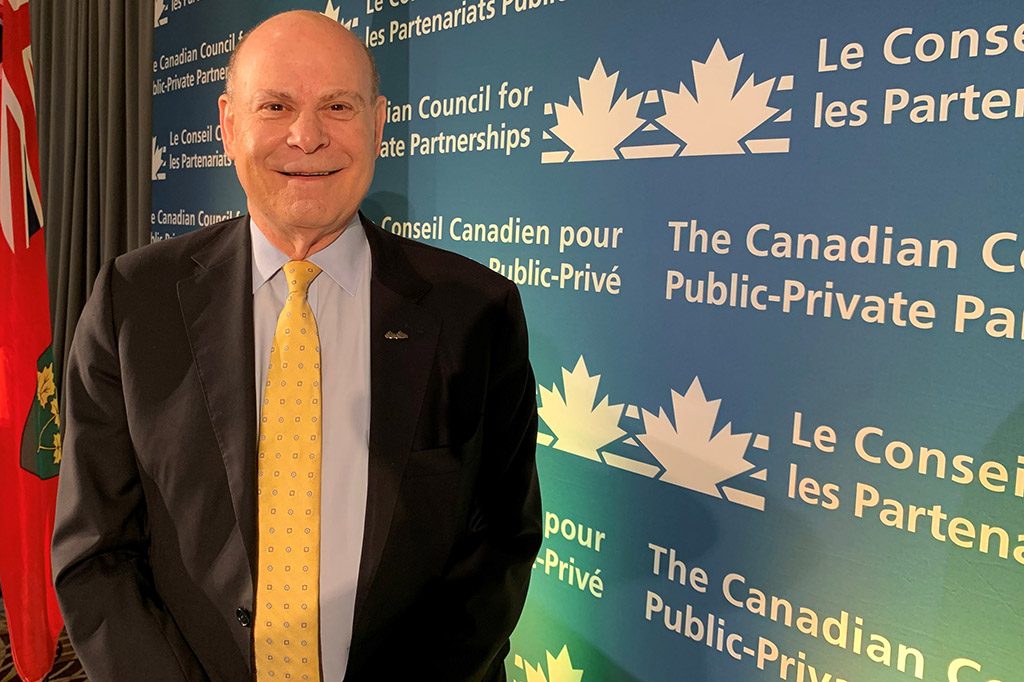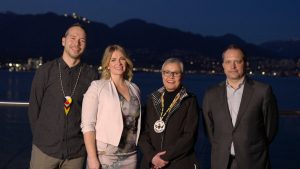TORONTO – P3 is shifting from big tech to big change on the world stage.
This year’s annual conference of the Canadian Council for Public-Private Partnerships (CCPPP) emphasized the social impact and international reach of the public-private partnership (P3) model.
Past conferences looked beyond North America to include international participants, CCPPP president and CEO Mark Romoff said, but this year’s event set a new record.
“We made a very special effort to in fact make this conference more international because it’s meant to be a gathering of leaders from around the world. We recognize there are folks outside of Canada and North America who are significant players in the infrastructure and P3 space in order to enable a really substantive dialogue to take place,” Romoff said.
“We have people coming from 30 different countries which, for us, is a record and that too reflects both the relevance of the conference for people but also recognition that it’s a meeting place for people from around the world who are all being challenged by many of the same issues,” Romoff added. “So, it’s less about ‘how great are P3s’ and more about how are we addressing the challenges that maybe weren’t there a few years ago but are really impacting the way in which these projects come to market so that we can learn from each other.”
This year’s conference also had a greater emphasis on the social impact of infrastructure, Romoff said.
“The clearest recognition of that is the focus we put this year on Indigenous communities and the kind of issues they’re confronting,” he said. “They have big infrastructure challenges, a large gap of around $30 to $40 billion, so they need to address that.”
Romoff also noted more infrastructure projects are crossing into Indigenous land and the conference should recognize that and create a dynamic to examine issues.
“We’re trying to have both keynote speakers and panelists who come from Indigenous communities because they bring a unique perspective to the discussion and they’re confronted by many of the very same issues,” Romoff said, citing lawyer and Indigenous advocate Roberta Jamieson’s participation on a skilled trades panel and opening keynote speaker and president of Inuit Tapiriit Kanatami Natan Obed.
“(Obed) laid out an agenda of challenges that we as a council are very focused on because we’re working very closely with a number of Indigenous communities and associations because they’re part of the national fabric. For us, it’s important to ensure that their messages get a chance to be presented and that we can work together to make a difference for that community,” Romoff said.
The government’s role in P3 development is another key part of the conference, he added.
“Without governments, there’s no industry and no projects, and the business community comes here to learn about their next opportunity, so you’re seeing our effort for more opportunities to engage with public sector officials, both on the podium and through the networking that’s taking place,” Romoff said.
“The reality is that there have been changes in government over the past year, so we wanted to give those provinces an opportunity to outline the vision and priorities of these new administrations because it’s of real interest to the folks in the audience too,” he added.
The benefits of this approach extend to both government and those bidding on projects, he said.
“The intent is to both showcase the next generation of infrastructure investment, while at the same time, giving these political leaders an opportunity to hear from their own constituents about the ways they can make adjustments to their programming that will ensure the bidding community actually bids these projects,” Romoff said.











Recent Comments
comments for this post are closed